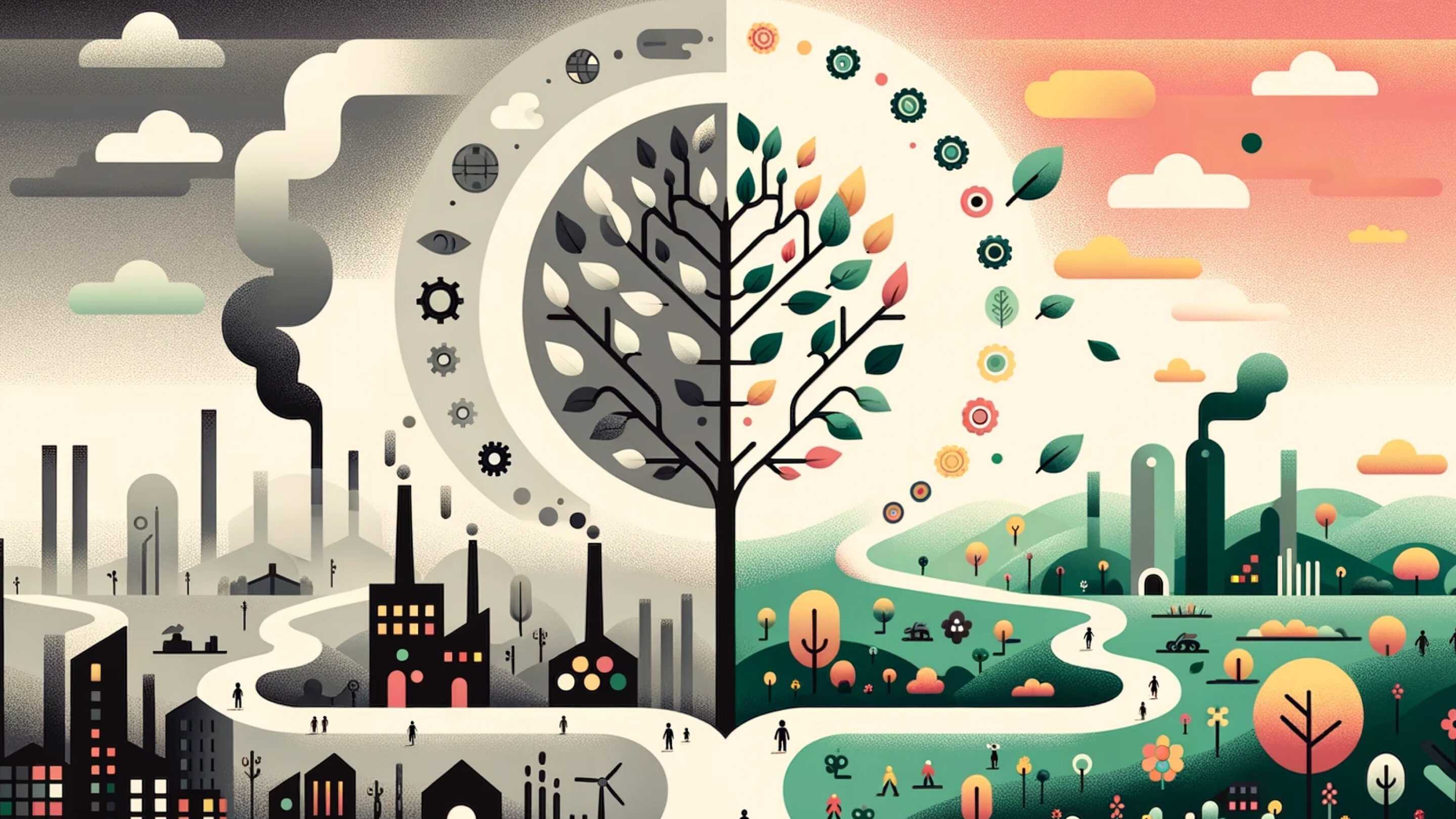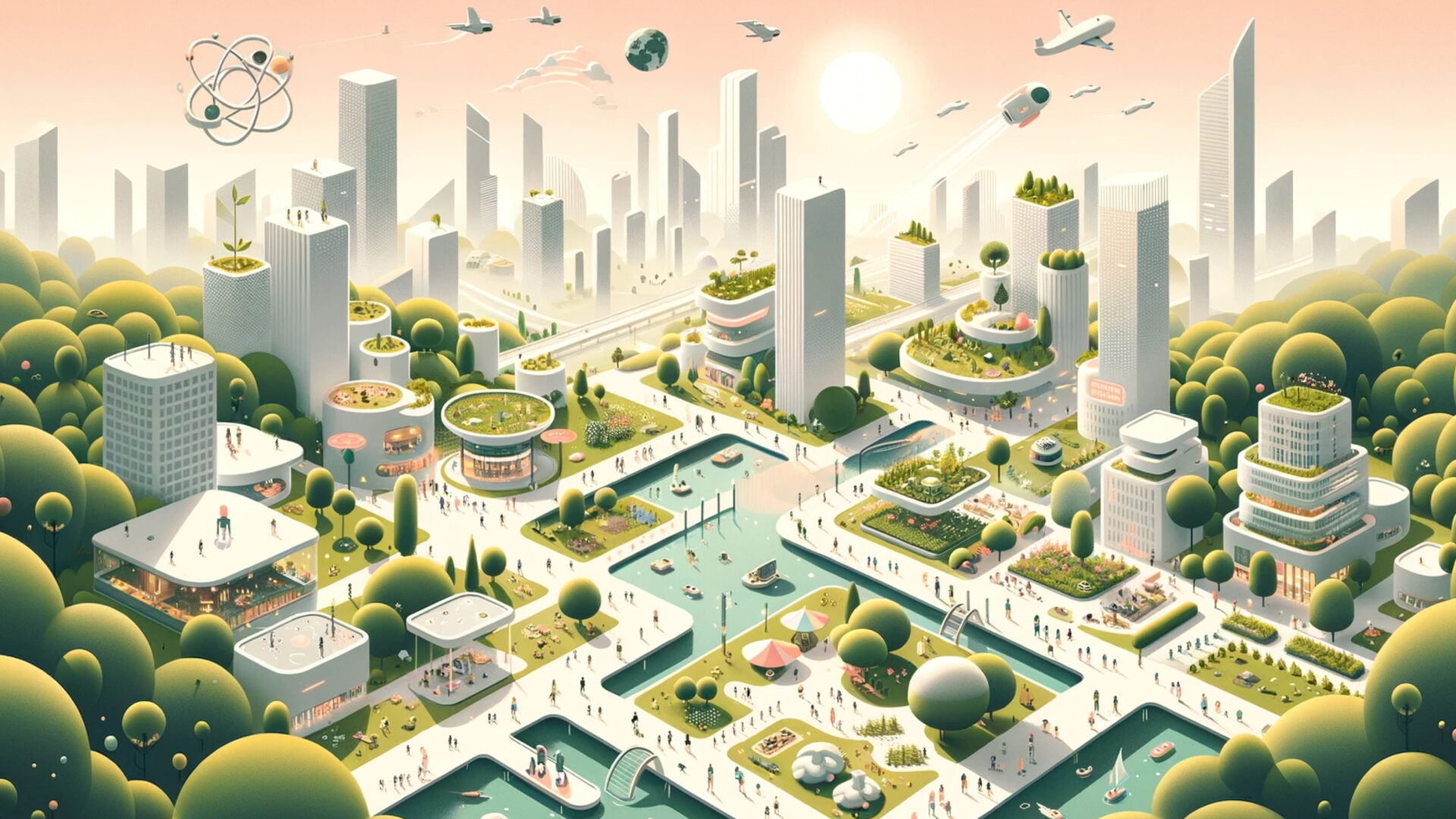
The convergence of future trends — an uncertain tomorrow
Predicting the future is not easy, especially when several massive trends are set to intersect in the coming decade. From global warming to AI to declining populations, the next 5-10 years promise a blend of challenges and opportunities.
Imagine sitting at a crossroads. Five roads converge, each leading toward a different future. What lies ahead?
In this narrative, we’ll explore three scenarios—each one a blend of the five key trends that will shape the coming years and decades.
The five mega trends converging
- Global warming and food shortages: The planet is getting hotter, causing more frequent natural disasters and affecting agriculture.
- General AI and automation: Robots and software are taking over tasks that humans used to do but also speeding up development of new technology. Read the predictions of Hunter Jay on the coming years of AI development.
- Population decline and capitalism’s limits: Western countries face decreasing birth rates and the question of how an economy grows when its population doesn’t.
- Solving longevity problems: Medical advances are extending human life expectancy and health but maybe not for everyone.
- Struggle for livable space and risk of conflicts: Urbanization, climate change and resource constraints make space a premium.
The bad scenario: Convergence towards crisis
Climate instability and resource scarcity
The impact of global warming reaches critical levels, causing extreme weather conditions and threatening global food supply. The capacity for self-recovery of ecosystems diminishes.
Automation and unemployment
General AI and automation technologies advance at a rapid pace, making many traditional jobs redundant. Unemployment rises sharply, leading to social unrest.
Economic contraction and population decline
Faced with an aging population and a shrinking workforce, the economies in the Western world begin to contract. The ideal of endless economic growth becomes untenable.
Longevity without quality
Advancements in healthcare extend human life but do so in a world less hospitable and more unstable. The elderly population increases, but quality of life does not.
Space and conflict
Competition for habitable land and resources leads to increasing geopolitical tensions, border conflicts, and possibly war.
In this scenario, the confluence of trends exacerbates each individual problem, creating a multifaceted crisis with compounding challenges. Will humanity even survice the outcome?
Business Implications and Considerations
In a world moving toward crisis, businesses must focus on risk mitigation and resilience.
- Supply chain: Invest in diversifying supply sources to reduce vulnerability to disruptions caused by climate or geopolitical issues.
- Workforce: Prepare for social unrest and high unemployment by offering job training and upskilling programs, ensuring that your workforce can adapt to an automated environment.
- Sustainability: Implement eco-friendly business practices to reduce your carbon footprint and improve community relations.
- Financial stability: Prioritize business models that can sustain economic downturns, including developing multiple revenue streams.
The great scenario: Technological harmony
Sustainable solutions
New farming methods and sustainable technologies mitigate the worst effects of climate change, stabilizing food production and reducing environmental impact.
Automation as an enabler
AI and automation take over mundane tasks but also create new forms of employment, complementing human skills and improving quality of life.
Capitalism reimagined
The focus of economic activity shifts from sheer growth to sustainable well-being. Reduced birth rates and a more stable population enable a new economic equilibrium.
Enhanced longevity
Longevity research not only extends life but greatly improves the quality of late-life years. The healthcare system adapts to support an older but healthier population.
Efficient use of space
Urban planning and international cooperation make more efficient use of available space. Resource distribution becomes more equitable.
In this utopian scenario, technological and social advancements work in harmony to solve the major challenges facing humanity. This is the scenario we dream about where every problem is solved in the best possible way.
Business Implications and Considerations
In a utopian scenario, the emphasis for businesses will be on sustainable growth and active participation in social betterment.
- Innovation: Be at the forefront of adopting new technologies that enhance both quality of life and environmental sustainability.
- Human capital: Focus on employee well-being and development, as workers in this scenario would likely value purpose over mere employment.
- Partnerships: Collaborate with governments and NGOs to contribute to global well-being, leveraging your business strengths.
- Consumer expectations: Cater to an increasingly educated and demanding customer base that values sustainability and ethical practices.
The good scenario: The middle path
Varied climate response
Global warming effects are mitigated to some extent, but challenges remain. Some regions become more arable, while others suffer. Migrations are needed but can be controlled.
Mixed economic outcomes
Automation both eliminates and creates jobs, causing transitional pains. Economic systems partially adapt, but inequality persists. There are transitional periods of unrest.
Population stasis
Population in the Western world stabilizes, but economic systems struggle to adapt to a new normal that isn’t based on growth.
Longevity gap
Medical advancements extend life but are not universally accessible. A longevity gap between the wealthy and the poor emerges.
Space inequality
Urban areas develop unevenly. Smart cities offer promise but are not a reality for everyone.
This scenario is a blend of successes and failures, presenting a future that is neither wholly good nor bad, but complicated. Humanity survives but everything is not fine.
Business implications and considerations
In a mixed-outcome future, agility and adaptability will be key for business success.
- Flexible business models: Prepare for both growth and contraction by having a flexible business model that can adapt to market demands.
- Talent management: As automation reshapes the job market, focus on a balanced workforce that incorporates both human skills and machine efficiency.
- Social responsibility: With uneven advancements and persistent inequality, corporate social responsibility initiatives can differentiate your business.
- Data-driven decision making: Utilize data analytics to monitor trends and adapt strategies in real-time, staying one step ahead of challenges and opportunities.
The black swan factor: Expecting the unexpected
In any discussion about future trends and scenarios, it’s critical to account for the concept of Black Swan events—highly improbable occurrences that have enormous impact and are only rationalized in hindsight.
These unpredictable elements can suddenly and radically shift the trajectory set by existing trends, rendering all prior predictions and models obsolete.
Planning for the future requires a multifaceted approach that considers both predictable trends and unpredictable Black Swan events.

Designing your future: Your role in shaping outcomes
As we navigate this complex tapestry of trends and uncertainties, it’s crucial to recognize that the future is not just something that happens to us—it’s something we actively create.
While we can’t control all variables or predict Black Swan events, we can engage in designing our own futures both at an individual and collective level. The future is not set in stone.
The convergence of these megatrends presents a complex and challenging landscape. Yet, within that complexity lies the opportunity for transformative change.
By understanding the forces at play, preparing for the unexpected, and actively participating in shaping the future, we can aim to navigate through uncertainty toward a more promising tomorrow.
Also read A method to challenge or build on top of an existing business


